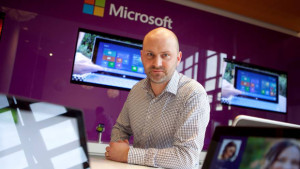Every once in a while an opportunity comes along that initially looks like a problem. For companies that have been using Microsoft’s hugely popular Windows server 2003 operating system, that is just what is going to happen when the software officially goes end of life on 14 July.
Initially, IT departments could be forgiven for resenting the hassle involved in executing such a significant change, but at the same time any company still using Server 2003 is in a really interesting position. A huge amount has changed in the world of IT since Server 2003 was state of the art.

Depending on the size of the organisation, its abilities and its own internal IT resources, deploying a hybrid model can be as simple as having a mix of physical servers both in its own server room or data centre as well as in a service provider’s data centre, and then ultimately having some or all of their IT assets sitting in the public cloud, Art Coughlan, Microsoft Ireland
Maturing expectations
“The world is very different today and the way we interact with technology, the way we do business and the way commerce is driven has moved on massively,” said Art Coughlan, cloud and enterprise lead for Microsoft Ireland.
“People’s expectations are also very different. Their experience of how they access and gain services in their personal life now has a direct effect on the expectations they bring to technology at work, and that requires businesses who run with IT to bring an element of flexibility to meet that demand whilst also retaining the need to meet corporate governance, compliance and security standards.”
Twelve years ago, the cloud did not exist, mobility did not exist and virtualisation did not exist as accessible products for the masses. The kind of power and flexibility that is now within reach of every kind of company would have been the stuff of dreams.
“Even 64-bit technology was new back then, so the hardware that software is now running on has also come on in leaps and bounds. I recently heard a very interesting stat from one of the two big hardware vendors — you can run 20 virtual machines today for the same power footprint as a single processor physical server back in 2003.”
Hybridisation
According to Coughlan, at the core of what Microsoft wants to enable their customers to do in the data centre is the idea of hybridisation to facilitate companies that want to move to the cloud.
“Depending on the size of the organisation, its abilities and its own internal IT resources, deploying a hybrid model can be as simple as having a mix of physical servers both in its own server room or data centre as well as in a service provider’s data centre, and then ultimately having some or all of their IT assets sitting in the public cloud,” he said.
“And that is a huge move forward from where we were in 2003. It goes beyond virtualisation as simply a way of providing superior density and better power consumption from traditional computer. And it brings people into the realm of consuming software as a service, things like Office 365 and CRM Online.”
This encapsulates the single biggest difference between the IT landscape of 2003 and 2015 — technology at all levels is increasingly about emphasising business abilities and having the technology itself fade into the background.








Subscribers 0
Fans 0
Followers 0
Followers